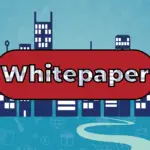In Part I of this two-part series we looked at why nearly 90% of mergers go awry and what must be done to ensure that M&A deals achieve maximum value. As discussed previously, regardless of merger type (coexistence, absorption, or synthesis), priority should be given to customer-facing processes vital for supporting the company’s customer service, vendor/distributor relationships, sales, customer support, and order management.
Focusing only on consolidation of core processes significantly reduces the time, effort, and costs associated with the merger, leverages the synergies of both companies, and increases the likelihood of success. Below, we’ve outlined a sequence of post-merger integration steps that focus on core processes and can add value to a merger or acquisition:
1. Align calendars and charts of accounts with acquiring company.
Post merger, your business will look very different than it did when you originally implemented your calendars and charts of accounts (COA). The gap between your COA and how you need to track your business should be addressed in the first 60 – 90 days after the acquisition. Rather than attempting to create multiple “fix” spreadsheets to bridge the gaps, deploy automated solutions designed to quickly streamline data integration and transfer, such as eprentise FlexField Software for aligning the new COA and eprentise Reorganization software to change calendars in Oracle E-Business Suite (EBS).
2. Investigate statutory and regulatory requirements in all countries in which the combined entity will operate.
Establish or revise tax structures and regulatory compliance features for each individual country in which the company operates, and submit necessary regulatory filings and/or reports to the Securities and Exchange Commission. Determine how many different COAs the company currently has, and begin working on a plan to adopt a single, global COA for every business entity. Selecting a reporting unit that accommodates both GAAP and IFRS rules will provide a seamless transition.
3. Revalue assets and date placed in service.
The new GAAP rules require that all assets have a date placed in service as of the date of the acquisition, the value of the acquisition (i.e. fair market value – usually net value) of the original asset cost, and the depreciated value. This is technically accomplished through aligning the Fixed Assets Key FlexField in EBS to the GL calendar that was changed in step one above, a process that is made significantly easier by using software as opposed to a manual approach.
4. Align versions of Oracle E-Business Suite (EBS).
Aligning operations with inconsistencies, different meanings of data, or even different patch levels requires a huge manual effort for reconciliation, translation, and maintenance. More than implementing a new technology, changing business processes forces companies to evaluate the value of each of its parts and to work together to develop synergies. Simply moving to the cloud doesn’t mitigate the need for global standards, data quality, and control. Providing a set of standards and governance policies is a foundation for the communication and sharing of data. Embracing change enables enterprise growth; companies should look for ways to work with their existing ERP systems before considering a change to a new technology.
5. Consolidate instances.
Consolidation drives collective agreement on how the business should be run, what data assets need to be shared, and how business processes should be standardized on a foundation of common enterprise-wide operating procedures. However, consolidations often leave organizations struggling with disparate versions—or instances—of their ERP software, causing inefficiencies, duplication, and inconsistencies across the entire enterprise. As with alignment of calendars and COAs, deploy automated software that can quickly and cost effectively migrate data to a centralized data center. eprentise Consolidation software automates this process and generates all of the required code, standardizes data, resolves duplicates, aligns set-up parameters, and synchronizes business processes across multiple implementations of EBS.
6. Reorganize within an instance to align Sets of Books (or ledgers), Legal Entities, Operating Units, and Inventory Organizations to standardize business processes and leverage synergies of both companies.
Without alignment and standardization of business processes, companies are unable to capitalize on the strengths each brings to the merger, which can lead to lost value and risk of failure. In the past, companies seeking to align core configurations had two options: create cumbersome workarounds that could result in inconsistent and inaccurate reporting data or undergo a costly and time-consuming reimplementation of their EBS. eprentise Reorganization software enables companies to remodel an existing instance of EBS without loss of history, reimplementation, or building bridges to reconcile information gaps.
A merger is one of the most exciting – and disruptive – events in the life of a company. It presents opportunities to leverage synergies, offer new and exciting products and services, and increase shareholder value. With the right post-merger planning and focus on key success factors and core processes we’ve covered in this series, companies can avoid the Value Gap and put in motion a transition plan for its people, technology, and processes that establishes a foundation for success now and in the future.







3 thoughts on “Six Post Merger Integration Steps that Add Value to M&A”
Can you be more specific about the content of your article? After reading it, I still have some doubts. Hope you can help me. https://accounts.binance.com/ro/register?ref=V3MG69RO
Your point of view caught my eye and was very interesting. Thanks. I have a question for you.
Thanks for sharing. I read many of your blog posts, cool, your blog is very good.